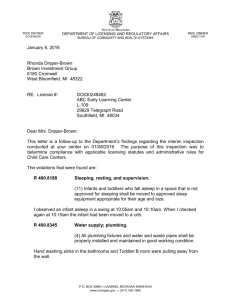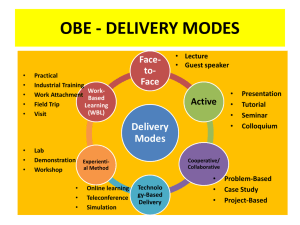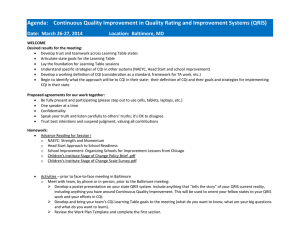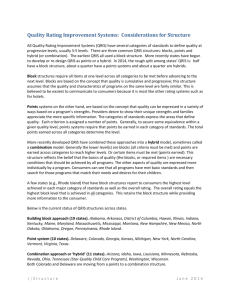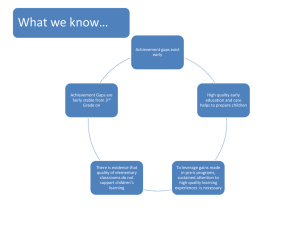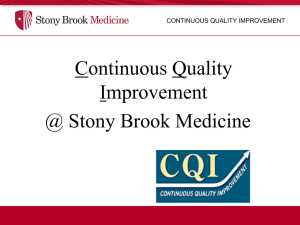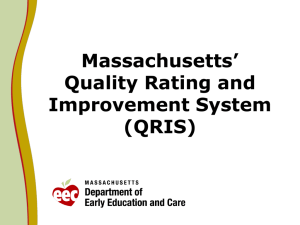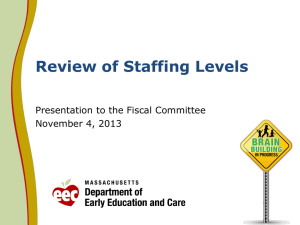ECE Technical Assistance Data Tracking Systems
advertisement
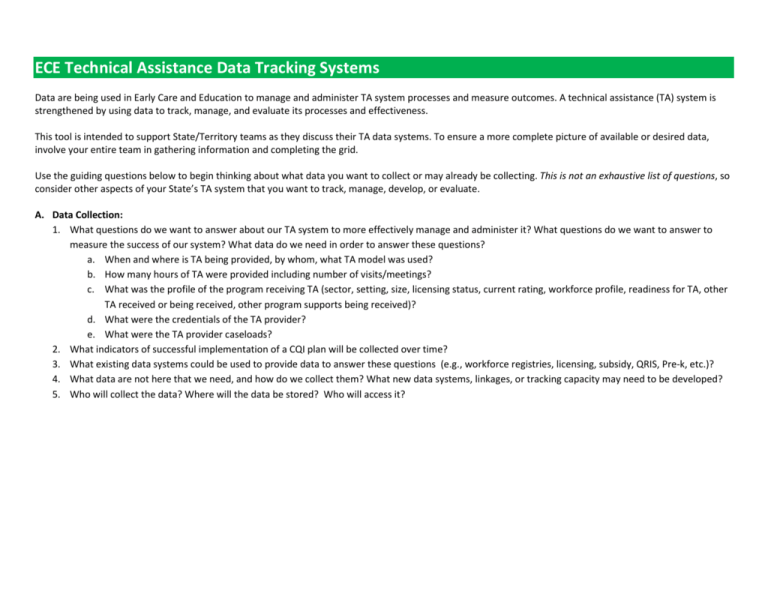
ECE Technical Assistance Data Tracking Systems Data are being used in Early Care and Education to manage and administer TA system processes and measure outcomes. A technical assistance (TA) system is strengthened by using data to track, manage, and evaluate its processes and effectiveness. This tool is intended to support State/Territory teams as they discuss their TA data systems. To ensure a more complete picture of available or desired data, involve your entire team in gathering information and completing the grid. Use the guiding questions below to begin thinking about what data you want to collect or may already be collecting. This is not an exhaustive list of questions, so consider other aspects of your State’s TA system that you want to track, manage, develop, or evaluate. A. Data Collection: 1. What questions do we want to answer about our TA system to more effectively manage and administer it? What questions do we want to answer to measure the success of our system? What data do we need in order to answer these questions? a. When and where is TA being provided, by whom, what TA model was used? b. How many hours of TA were provided including number of visits/meetings? c. What was the profile of the program receiving TA (sector, setting, size, licensing status, current rating, workforce profile, readiness for TA, other TA received or being received, other program supports being received)? d. What were the credentials of the TA provider? e. What were the TA provider caseloads? 2. What indicators of successful implementation of a CQI plan will be collected over time? 3. What existing data systems could be used to provide data to answer these questions (e.g., workforce registries, licensing, subsidy, QRIS, Pre-k, etc.)? 4. What data are not here that we need, and how do we collect them? What new data systems, linkages, or tracking capacity may need to be developed? 5. Who will collect the data? Where will the data be stored? Who will access it? B. Data Collection Matrix: Use the table below to assess the availability of data to inform your TA system. Consider sources of data such as licensing, QRIS, infant toddler quality initiatives, Pre-K, Head Start, and other available data systems. Source of Data Licensing QRIS Pre-K Head Start Other Quality Initiative (e.g., infant toddler) Other Data Systems What data are collected in these systems? Do you have access to the data? Are these data reliable? C. Data Analysis: TA Service Administration and Management Consider these questions to help make informed decisions about the management and administration of your system. 1. 2. 3. 4. Are there major gaps in TA service, geographically, by setting, by sector, by ratings, etc.? Are there redundancies in TA services or ways to increase alignment? Are there equitable workloads for TA providers? Is TA provided aligned with the program’s CQI plan? Assessing Impact of TA Consider these questions to determine whether the TA being provided is having an impact on the quality of programs. 1. Are the ratings increasing for programs that are receiving TA? 2. Is there a correlation between increase in ratings and number of hours of TA received, the credentials of the TA provider, the TA strategy used, etc.? 3. Are there common characteristics of programs that are more successful/less successful than others, e.g., geographic area, program setting (center, home), initial rating, number of hours of TA, staff/directors’ level of educational or experience, TA delivery method, credentials of TA provider, etc.? 4. Over time, do the programs maintain the changes made as a result of their CQI work and TA received? Data Analysis and Use Consider these additional questions when determining how you will analyze and use your data. 1. 2. 3. 4. How often will the data gathered be reviewed? How will data be used to inform decision making? Which stakeholders will be involved in feedback (TA Organizations, TA providers, recipients of TA)? What process will be used to evaluate the feedback and make decisions about adjustments in implementation?
